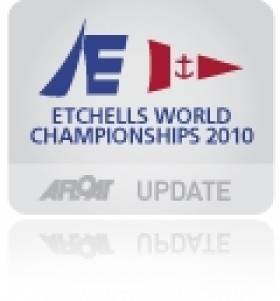Displaying items by tag: Etchells Worlds
Etchells Class Condemns Alleged Harassment of Female Sailor On Night of Worlds Awards Dinner
The International Governing Committee of the International Etchells Class Association has condemned the alleged harassment of a female sailor on the night of the Etchells Worlds awards dinner in Miami last week.
In an anonymous open letter published on Scuttlebutt Sailing News on Monday (24 April), the female competitor said she was harassed by “no less than half a dozen men” which included lewd comments, multiple instances of unwanted touching and more over the course of the evening.
On Wednesday (26 April), the Etchells Class issued a statement in support of the letter’s author and condemning the reported behaviour.
The statement reads: “The International Etchells Class Association leadership is dismayed to learn of the experience of our competitor at and following the 2023 Etchells World Championship awards party and condemns the behavior reported. This type of conduct is not unique to the Etchells class, sailing, or sport. Women face such behavior in all aspects of their lives. We applaud the courageousness of the author for speaking out. Indeed, these types of actions need to be called out, discussed, and eliminated. This is incumbent on all of us, not just the victims.
“We, as a class, remain committed to making the sport accessible to, and enjoyed by, all sailors. Increasing women’s participation is important to us and we do not condone any conduct that makes women feel uncomfortable or objectified in any way. We will do our part to work with our fleets and sailors to put a stop to such behavior and call on other classes and sailors around the globe to join us.
“The author said it best herself: ‘If you really cared about increasing women’s participation in sailing, then you would actually respect us. As people. Not just as sailors. And I truly appreciate all the men who do respect us and support us — you are thankfully the majority. To the good guys — please help us put the creeps in their places.’
“The International Governing Committee of the Etchells Class is meeting to address this situation and establish processes for creating a better culture of inclusion and accountability going forward.”
Etchells Worlds Howth, All Three Videos HERE!
Howth got a makeover for last week's Etchells World Championships and the video clips below show the fruit of all the hard work after a successful championship there.
























































